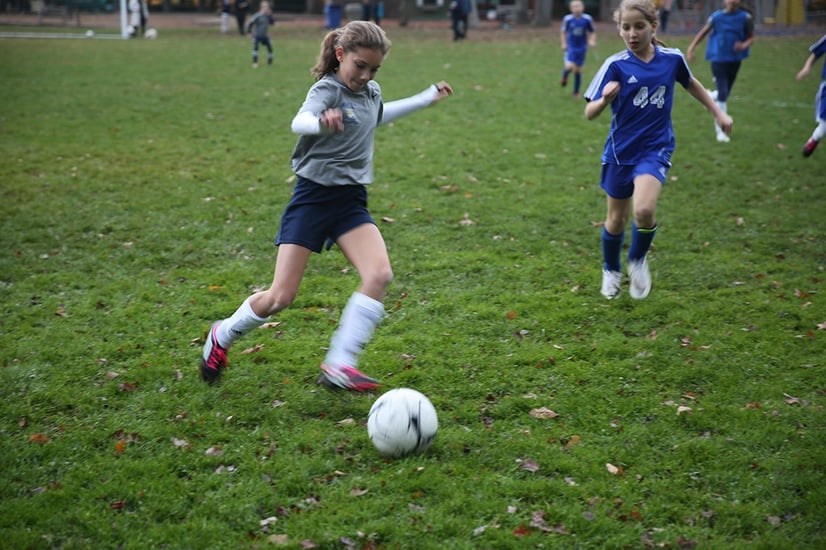One of the most hotly debated subjects affecting children is specialization in youth sports. It’s the one question that, as a director of coaching and as a high school head coach, I continue to struggle with finding the right answer...if there even is a right answer.
Picture the scene. It’s the end of Fall U9 soccer season and in the last game the coach speaks to his players about the game acknowledging their hard work and effort and that he looks forward to the winter indoor season with them all. Several parents then wait to talk to the coach to let him know that their child plays basketball during the winter and goes skiing on the weekends and that he plays lacrosse in the spring, so he won’t be around until next fall.
The coach’s face changes from pride in his team to one of disappointment and a sense of being let down. Why wouldn’t his players continue with soccer? How were they supposed to get better without playing? And if they didn’t continue then would they fall further behind other players?
This is an all too often occurrence in sports as they start to become more year-round. Take competitive ballet, swimming and gymnastics which are yearlong commitments, in addition to the more traditional sports such as basketball, lacrosse, ice hockey, soccer and baseball that now occur outside of their traditional seasons. Why has sport specialization increased at an alarming rate in the past two decades – with even younger children – and what are the effects on the child?

Perceived Value of Specialization in Youth Sports
The theory behind Anders Ericsson’s 10,000 hours of deliberate practice to reach mastery has been cited as a possible influence on parent’s thinking behind directing their child into one sport. In my opinion, I don’t honestly believe that parents consciously hold onto this fact when making decisions about their child’s participation in sports. Although, the connection between time spent practicing and the permanency and proficiency gained in skill development and understanding is something that is clearly understood.
But does playing only one sport really lead to these significant gains, and if so at what cost? The fact is that there are many more factors at play here. As college tuition costs continue to accelerate, so too has the belief that an athletic scholarship is a way to offset that cost. But before even reaching this stage of a child’s life there are the 10-12 years of the club experience where more professionally licensed coaches now work making a living based on children continuing to play the same sport. High school programs continue to be increasingly more competitive at the varsity level, such that we are now in an era where the two or three varsity sport athlete does not commonly exist anymore.
For the purpose of this post I will use soccer because it is the sport I am most familiar with. To set the scene most soccer players who reach varsity level at high school have already played 10 years of soccer, progressing through recreational, travel, premier and to academy and United States Soccer Federation national select programs (the latter two now prohibits play for high school). In an interview with US Youth Soccer Sam Snow, USSF Director of Coaching, said as much as 25 percent of clubs are imposing year-round commitments on players as young as nine and 10.
Is Specialization The Best Route?
According to Snow athletes participating in more deliberate practice do show an increase in improvement over those who do not in the short term. However, as time progresses, the multi-sport athletes surpass the specialized athletes. "All of a sudden, it’s time for college soccer and a lot of those kids who specialize too soon are emotionally and physically done," Snow said. "And the other kids who didn’t specialize early continue on.”
I hazard to guess that many of the clubs that compete at the highest levels of youth soccer do require a commitment, because in not doing so it means the better players leave, clubs become second or third tier, less players are placed in college, so a club's reputation deteriorates and therefore over time revenue streams reduce. The pursuit of getting to that elite level – college and beyond – is statistically so low that specialization is really an absurd decision. One of the best websites that tracks this can be found here.

If parents knew of the statistical improbability of making a living from sports or even a college scholarship, would the push to specialization occur with such vigor? The problem is that the need to keep up with others and even to play on the best club team or high school varsity team is pushing this specialization further downward, with specialization now occurring within the individual sports themselves such as a goal-keeper in soccer, quarterback in football, and a pitcher in baseball.
So in knowing that specialization has become more prevalent what are the possible side-effects on young athletes and is there a set of circumstances in which specialization is acceptable? I'll address this in my next post.



